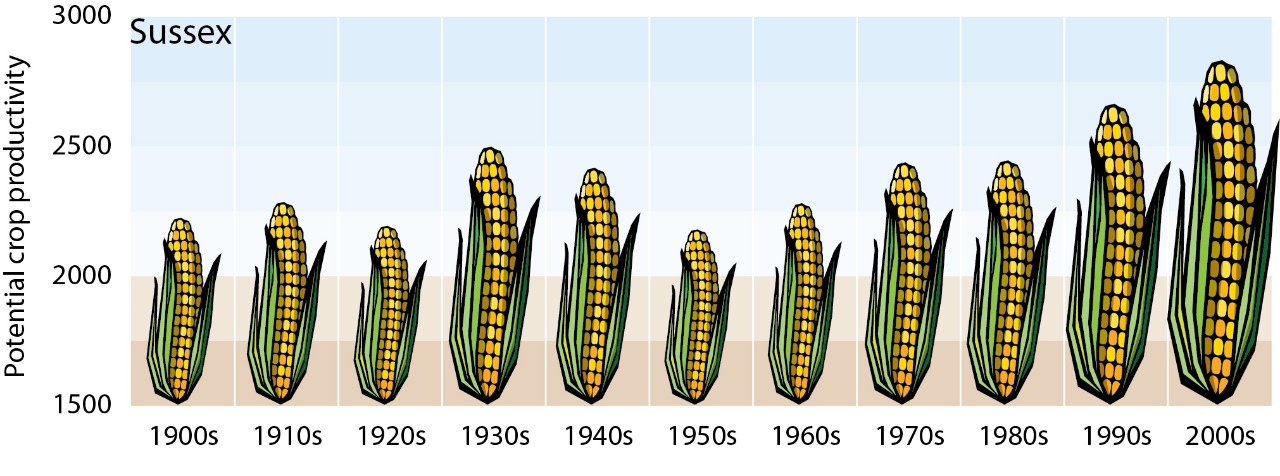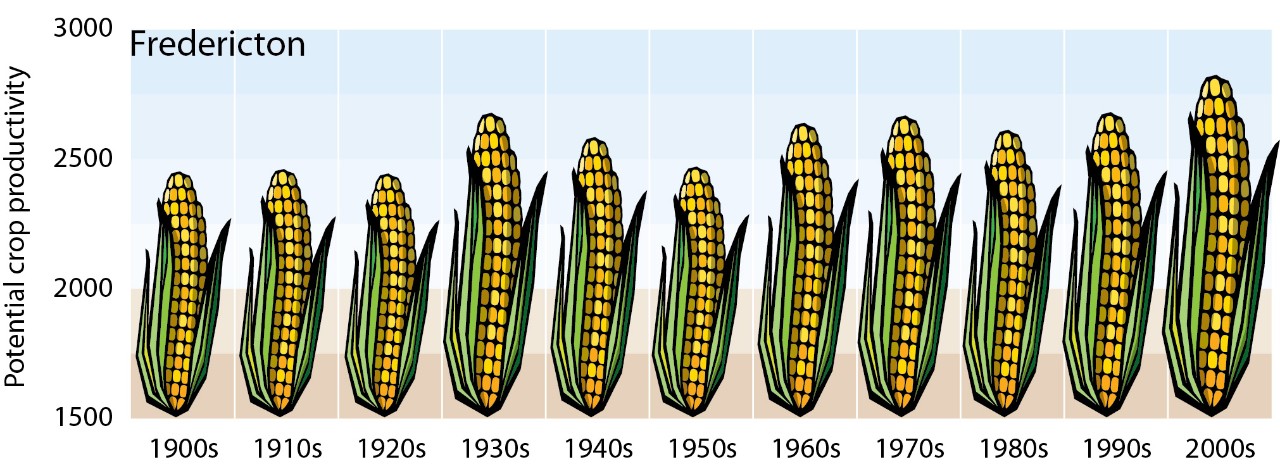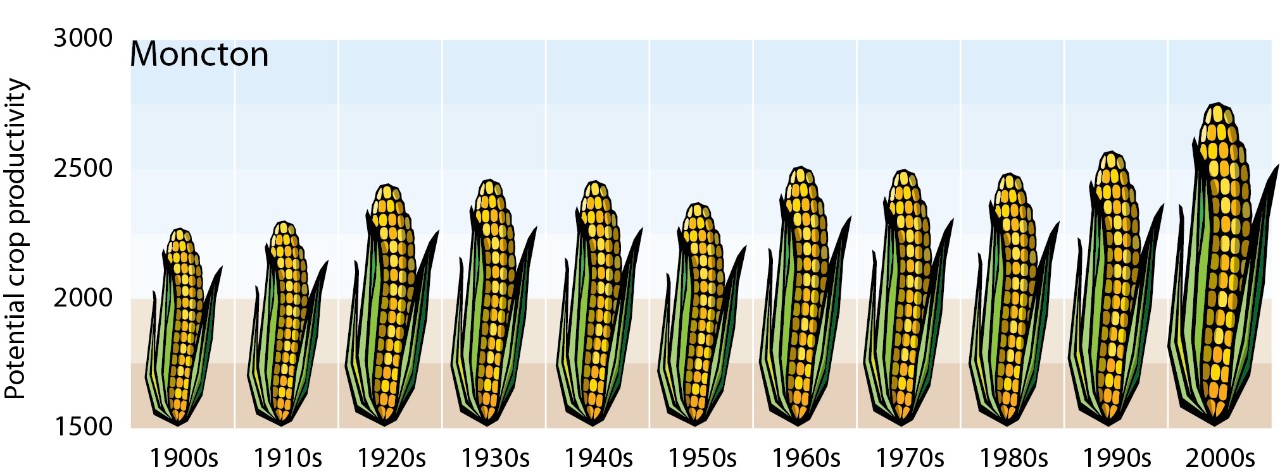Agricultural Crops



What is happening?
Food producers use Crop Heat Units (CHUs) to predict the potential growth of heat-loving agricultural crops, such as corn, canola and soybean. Higher CHUs may lead to increased productivity of crops. Crop Heat Units have been calculated by agricultural researchers for the areas surrounding Fredericton, Moncton, and Sussex using air temperature records that date back to the 1900s. Average CHUs over the century were 2,400 – 2,600. Since the 1980s, CHUs increased at all three sites, and CHUs were higher in the 2000s than any other decade. In the 2000s, the CHUs averaged 2,750-2,850.
Why is it important?
New Brunswick food producers have been able to:
- achieve better quality and yield from temperature-dependent crops; and
- expand food production into some areas that were previously unsuitable due to a lack of heat.
What is predicted to happen?
Crop Heat Units are expected to increase as growing season temperatures in New Brunswick continue to warm. New Brunswick’s food producers should be considering opportunities for new types of higher yielding crops, hybrids, and varieties, as well as evaluating their on-farm practices.
Information sources
Environment Canada, Agriculture and Agri-food Canada, and Dr. Andy Bootsma
